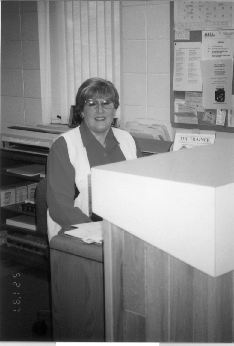Gore says USDOT will use PLA's
At the National Building and Construction Trades
Legislative Conference in April, Vice President Al Gore announced that all DOT agencies
may use project labor agreements on federal, state and local projects that use federal
funds. In making the announcement, Gore noted the
success of PLAs in creating efficiencies that help bring projects in on-time and
under-budget, while guaranteeing workers decent wages, benefits and working conditions.
"Its good for union members who get the work; it's good for nonunion workers whose
standards are raised; and it's good for American taxpayers," the Vice President said.
Laborers' to start Campaign for Working Families
This is an election year in Wisconsin and Wisconsin Laborers
will again conduct an issues-based Laborers' Campaign for Working Families.
Many issues have a direct impact on members and their ability to provide for themselves
and their family. The Laborers Campaign for Working Families is designed to inform members
about these issues and hold candidates accountable to them once they are elected.
Laborers' PLAN
Salute to Grassroots
The Laborers' Political and Legislative Action Network,
recognizes the following members for their participation in grassroots legislative and
political action on behalf of Laborers and their families statewide.
Tim Thompson, Local #317
Letter to legislator regarding prevailing wage issue.
Tom Klein and Miles Mertins, Local #1086, Calls to
legislators regarding prison labor, project labor agreements and prevailing wage issues.
Loren Bloyd, Local #1407 Campaign to pass the Wisconsin Rapids
school building and maintenance referendum.
Charlie Fecteau - Jerry Schneider -
Marty Kalising - Ron Burnside -
Russ Leaman - Daryl Foren -
Rodney Glinski - Howard Cooper Jr. - Richard Lidberg - John Swan -
John Schmitt - Joel Bechitsao -
Stephen Lerner - Peter Rake -
Earnest Mitchell - Robert Baker -
Dave Ashley - Jim Annis - Bill Johnson - Nacarsi Feaster - Alvin Ross, Local #113,
for various campaign activities associated with recent state Assembly and Senate special
elections.
Ask Your Lawyer
How important is the proper reporting of a
work injury?
by Thomas J. Flanagan
Previant, Goldberg, Uelmen, Gratz, Miller & Brueggeman, S.C.
Besides giving a complete
work injury history to your doctor, properly reporting the injury to your employer is the
next most important step in a worker’s compensation case. It is the first
foundational step in the claim process.
If your injury was witnessed by co-employees, it will make the filing
of your claim much smoother and easier.
However, many injuries are not witnessed by anyone other than the
injured person. In this situation, it is essential to report the injury to a supervisor.
It is very common, and part of human nature, to think that the pain
will get better. Consequently, the injury will go unreported for a period of time. This is
the wrong approach. You are better off, in almost all cases, to report the injury, because
you don’t know what the consequences of the injury might be.
You have 30 days to report an injury to your employer. Some employers
will deny a worker’s compensation claim if it is not reported within a certain time
pursuant to a work rule (i.e., not reported within two days according to a labor
contract). This is not a basis for denying a work injury. (It may be a violation of a work
rule, however.) The 30 day rule should be adhered to, but it is usually not fatal to
making a claim. The employer must show it was misled by not receiving the 30 day notice,
and this is very difficult for the employer to do.
If the injury was not witnessed and there is no supervisor immediately
around to whom to report the injury, tell a co-employee about the injury and how it
happened. That co-employee may become a witness in your claim should you be forced to a
hearing.
Finally, a properly recorded and reported injury at work can sometimes
work in your favor when trying to clarify the injury to your treating doctor.
Many times the initial history given to the doctor is not fully
understood by the doctor (or perhaps because of the situation, the injury was not
described at all to the doctor, only the symptoms themselves at the first visit).
The employer’s written record of a properly reported injury at
work can be given to the doctor to help the doctor understand the fact that there was an
injury and how it happened, thereby making the doctor more comfortable about writing a
report linking symptoms to a work injury that was not initially properly reported to the
doctor.
Be prompt and accurate in reporting all injuries.
Thomas J. Flanagan is with the law firm of Previant, Goldberg, Uelmen, Gratz,
Miller & Brueggeman, S.C.
Union members may call the law firm for a free consultation regarding all personal
injury matters at 414-271-4500 (Milwaukee); 920-863-3500 (Green Bay) or 414-549-6300
(Waukesha), or toll free at 800-841-5232. |
